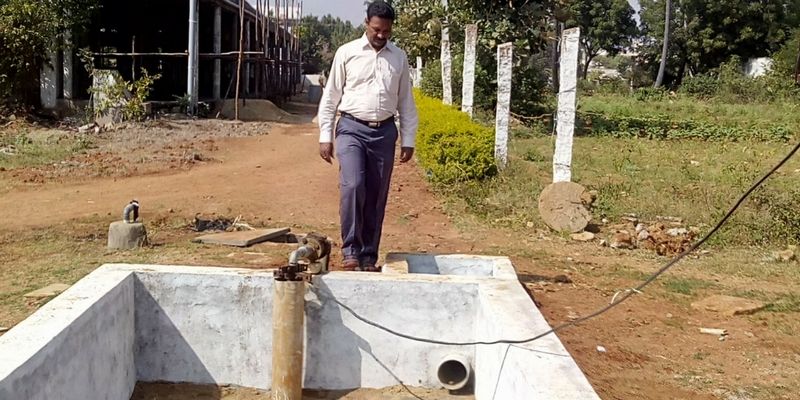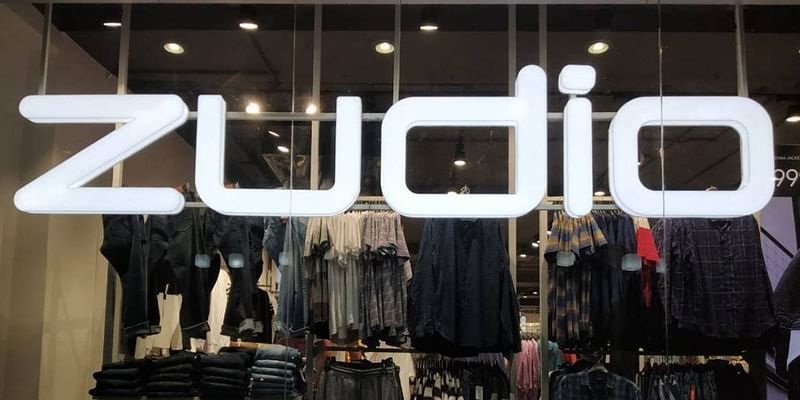How a self-taught engineer is saving Hyderabad from a water crisis
Subash Reddy is one of the few experts in Hyderabad striving to build site-specific and economical rainwater harvesting structures.
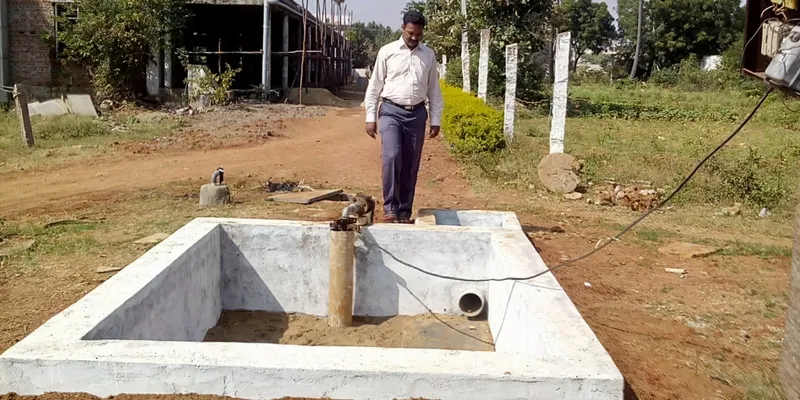
Being a metro city, Hyderabad has been facing a severe water crisis in the last few years for various reasons; with a peak in construction activities, the number of borewells drilled as deep as 1000-2000 ft, is on the rise. With decreasing open spaces, there are fewer avenues for water retention. Even a meagre rainfall of 2-3 cm results in the flooding of the roads. A rainfall of 7-9 cm, as was the case last September, can result in an unimaginable waste of rainwater.
Subash, a 46-year-old from Hyderabad is working towards finding a solution to these problems. He is working towards making Hyderabad self-sustainable by harvesting rainwater in households, institutions, and open spaces. Subash set up Smaran in 1997 with a mission to promote natural resource-based livelihoods for poor and rural communities and to protect and manage the environment and natural resources with major emphasis on the conservation of water.
Smaran
Subash, a humanitarian, nature lover, and a social worker, has committed his life majorly to the cause of water resource conservation. He holds a diploma in electronics and was working with BSNL before setting up Smaran.
I started working on water in Hyderabad city since 2003. Before that, I worked in rural areas such as Ibrahimpatnam mandal with farmers on land development, water sheds, water bodies’ renovation from 1998-2000. When I started reading the news about the severity of water crisis in Hyderabad city, I started concentrating here.
Although his education was not related to this field of work, he took an interest in the subject and educated himself. He met various experts in the field, learnt from them, and looked for solutions and methods suitable for the Hyderabad terrain.
The need of the hour
The city of Hyderabad has changed considerably in the past 20 years. The available space has decreased and rainfall patterns have changed.
Naturally, the method of rainwater harvesting should be adaptive to yield maximum result whether rainfall is scanty or in plenty–even during flash floods. The water usage has increased due to change in lifestyles; the city’s continuous infrastructural growth, vanishing open spaces and increased paved surfaces have all in turn contributed towards a decrease in the water table of the city.
At this moment, the proposed rainwater harvesting (RWH) methods or measures should suit and consider all the above parameters, opines Subash.
“It’s not about how many normal RWH pits we construct. The model and design of each pit or the structure matters as each area has different terrain. Moreover, site conditions and the availability of space also vary and one has to design site-specific pits. Sites with potential rainwater need to be designed and augmented to the maximum,” says Subash.
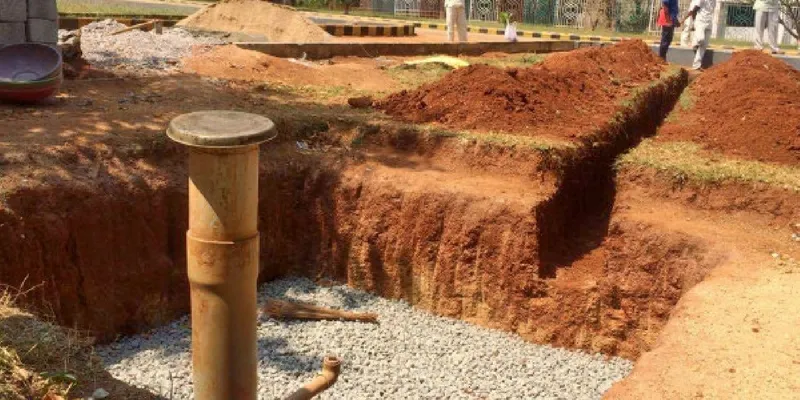
Any system constructed to harvest rainwater needs to have the potential for maximum water retention. But as Subhash reveals, people usually settle for structures that save merely 10 to 30 percent of the harvested water and lose the remaining water, because of lack of knowledge and experts to turn to.
Inverse borewell (IBW) method of rainwater harvesting (RWH) is strongly advocated by Smaran for reasons Subhash explains,
In our city, we find thousands of borewells abandoned with depths ranging from 120 ft to 1000 ft which have gone dry because of over extraction in the area or low ground water levels. Smaran considers those abandoned or dry bore holes as an asset and the IBW method of RWH will use those existing deep, dry and abandoned bore holes for artificial recharge. In this method, huge volumes of rooftop area rainwater (at least 60 thousand liters/100 sqm rooftop area per annum) collected from the buildings and also from selective surface areas is channelised through the rainwater outlets to the proposed site.
Along with building site-specific structures, Subhash considers a sound understanding of the relation between water and soil indispensable. “Preventing soil erosion, soil run off, retaining soil moisture are major aspects of any rainwater harvesting project,” he explains.
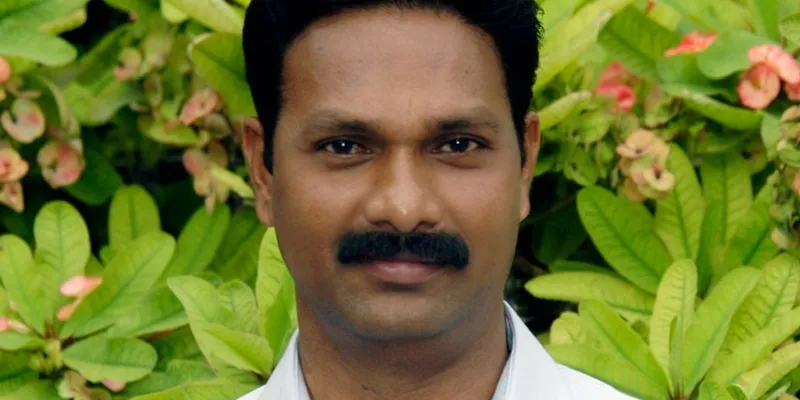
Providing other solutions
Along with the implementation of activities like improving underground water quantity and quality, and sustainable underground water management, Subash also takes a keen interest in implementing economical rainwater harvesting solutions and educating people about it, protecting and renovating potential tanks and self-sustained safe community drinking water schemes.
Presently operational in the areas of Ranga Reddy, Medak, Nalgonda and Hyderabad, Smaran till date has undertaken micro-watershed development, nursery raising, rainwater harvesting in urban areas, free health camps in urban slums and rural areas, informal education projects besides training the farmers in natural pest management, compost making, conducting save grain campaign and promoting rural women livelihood activities like tailoring and household enterprises.
Related read: Monitor, access, rejuvenate: IoT-based startups resolve to solve India’s water problem
The urban rainwater harvesting structure initiatives were implemented as local projects with organisations such aM/s Deloitte, NEAC, GHMC, HMWSSB, and EPTRI in Hyderabad and surrounding areas.
Smaran also extends its rainwater harvesting technical support to residents of other states like Karnataka, Maharashtra, Tamil Nadu through online communication via WhatsApp and other other personalised social media platforms.
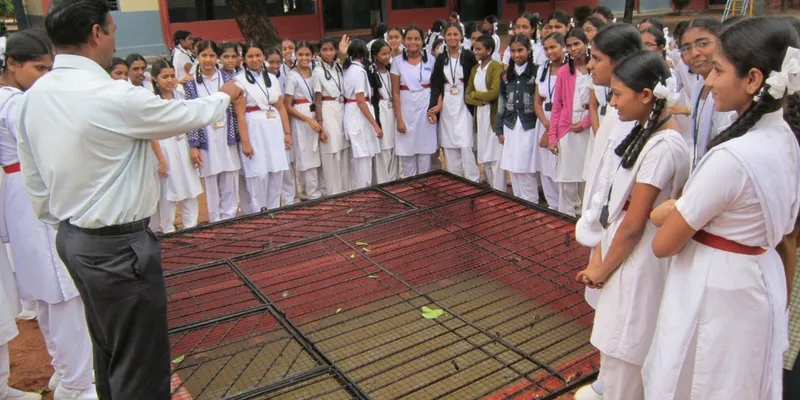
Subash says that there’s increasing awareness on rainwater harvesting in the city but people need to know effective methods in order to augment rainwater to the potential available.
“The problem is that people wait till May and June to call us, which doesn’t give us enough time to build the structures before the rain starts. The best time to construct the structures is from the end of the rainy season until the beginning of the rainy season next year. We have eight solid months to plan and execute which is generally ignored by everyone,” he says.
Currently, Smaran is running a crowdfunding campaign to raise funds for constructing site-specific suitable rainwater harvesting structures on the premises of Central Jail Cherlapally in Hyderabad.






